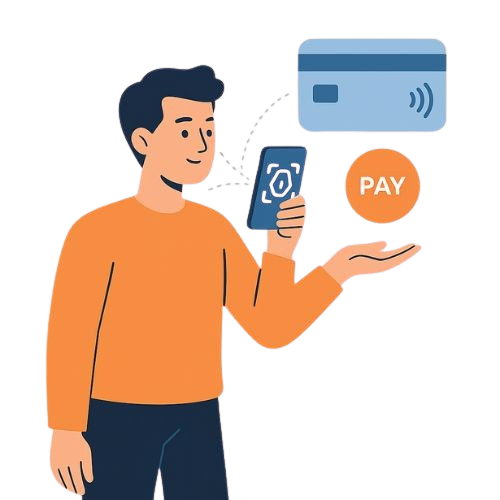The Rise of Invisible Payments in 2025

Invisible payments are shifting how transactions occur behind the scenes while customers remain largely unaware of the process. This method of payment is gaining ground as more businesses adopt automatic, background transaction processing. In 2025, the invisible payments trend continues to reshape the buying experience and the way merchants conduct business.
What Are Invisible Payments?
Invisible payments describe a model where transactions happen in the background. Instead of entering card details or waiting on processing, funds move automatically once an agreement is reached. Customers often experience this as a quick click or a recurring payment that happens without further user input. This approach leads to fewer interruptions during checkout and contributes to a faster, more convenient transaction experience.
Changes in Customer Expectations
As consumers get used to reduced friction when making payments, their demands continue to shift. Fewer steps during the payment process lead to fewer abandoned carts and a smoother follow-up routine when paying for subscriptions or memberships. Invisible payments can simplify the experience for users who regularly make frequent transactions. They value the ease of just checking their email receipt rather than re-entering payment details every time. Many companies are now adopting this payment model to accept payment online with minimal effort.
Technology Behind Invisible Payments
Advancements in technology have allowed the development of systems that process payments in the background. Innovations in payment security and user verification mean that transactions can occur automatically while still protecting sensitive data. Invisible payments depend on reliable back-end systems that manage recurring billing, tokenization, and background authorizations. One key factor is the reliability of payment processors—businesses seeking to work with experienced payment processing companies are drawn to providers that understand both the technical and security challenges of automating transactions.
The Market Shift in 2025
There is a clear market signal that invisible payment solutions are here to stay. As merchants adjust to this change, consumers benefit from quicker transactions. For businesses, it means reducing the friction encountered during checkout and increasing the frequency of automatic renewals for subscription-based services. Providers have introduced technologies that facilitate one-click checkouts and automatic card updates, making transactions nearly invisible to everyday shoppers.
A Closer Look at WebPays
One provider at the forefront of this innovation is WebPays. Known for its secure transaction processing and industry expertise, WebPays supports methods that allow merchants to process payments effectively without burdening the customer with multiple steps. By offering a dependable payment gateway that supports invisible payments, companies benefit from improved customer experiences at checkout. This method not only suits the day-to-day demands of online purchases but also fits well with recurring billing needs.
The Future of Background Transactions
Looking ahead, invisible payments are expected to continue growing. Changing consumer habits push businesses toward payment systems that offer frictionless transactions. With improvements in both technology and security measures, the ability to process transactions automatically will play an important role in modern commerce. When transactions occur in the background, merchants have more time to focus on critical business functions instead of chasing payment details repeatedly.
Final Thoughts
Invisible payments are redefining how transactions are handled, focusing on creating a cleaner and more user-friendly checkout experience. In 2025, this method of processing is not just a convenience for consumers but a vital tool for businesses seeking to reduce checkout friction while meeting modern customer expectations. Solutions from trusted providers like payment gateway keep the process secure and straightforward, meeting the high demand for automatic transactions in various sectors. As we move through 2025, background transactions will continue to influence how businesses approach customer payments and help maintain a competitive edge in the evolving market.